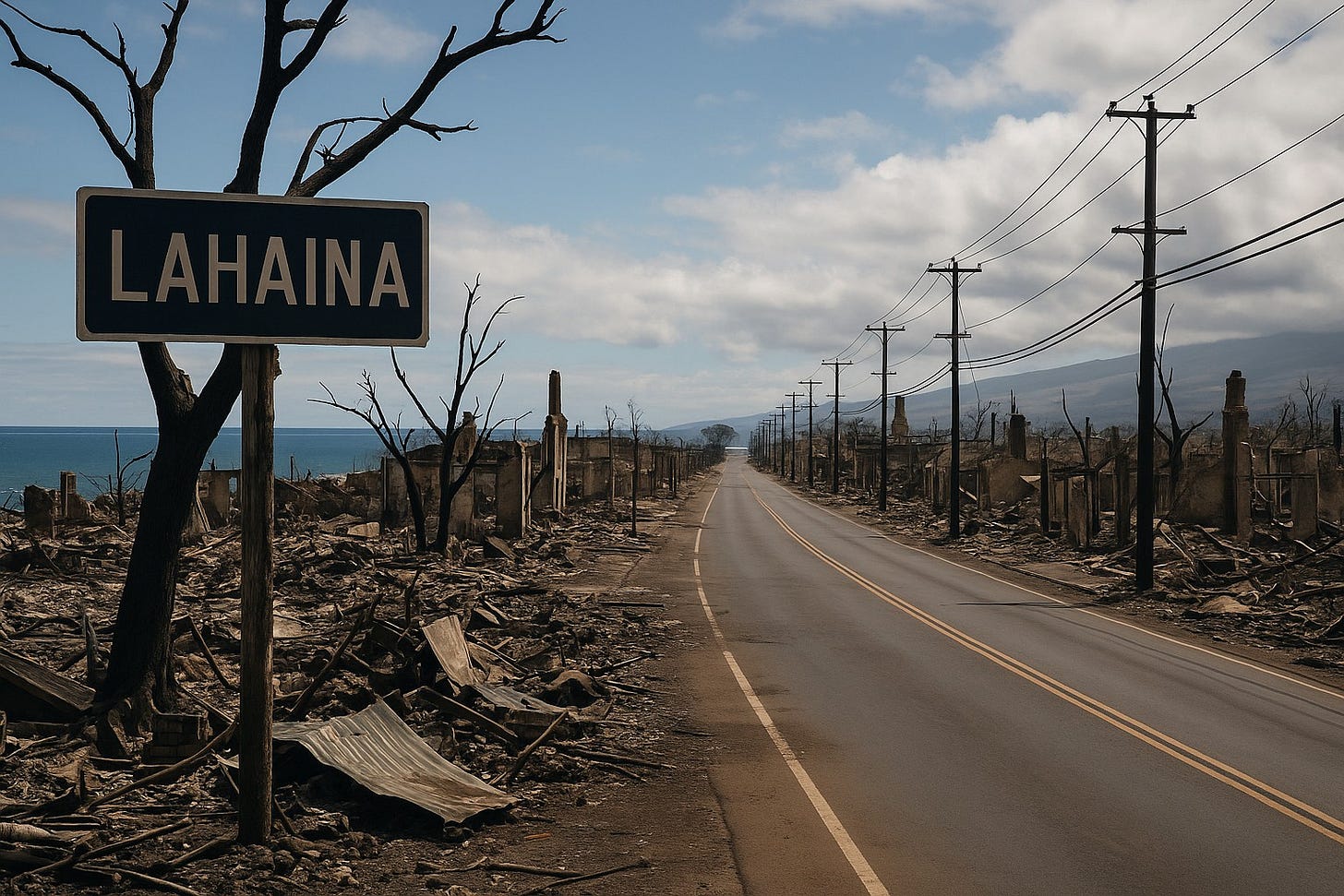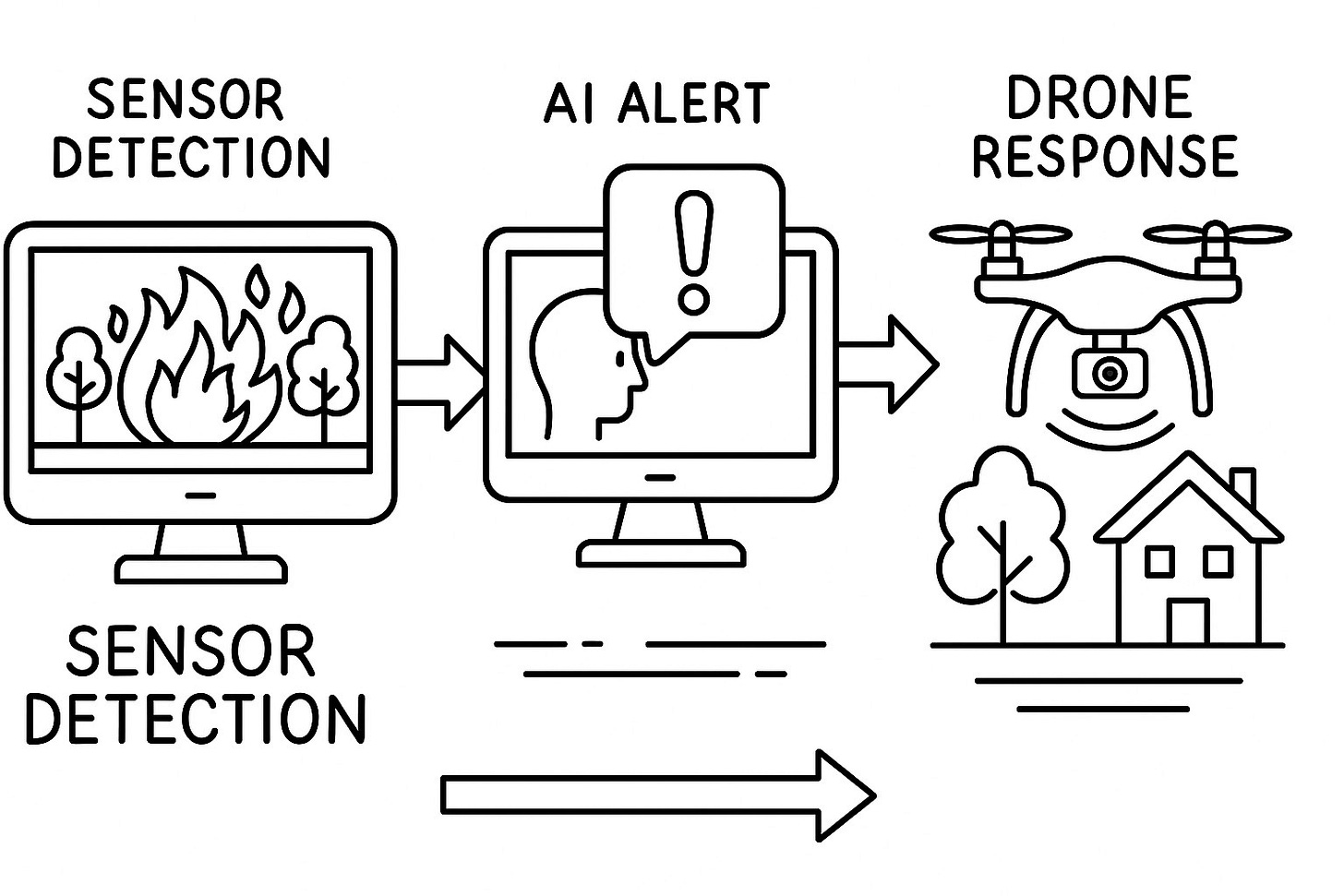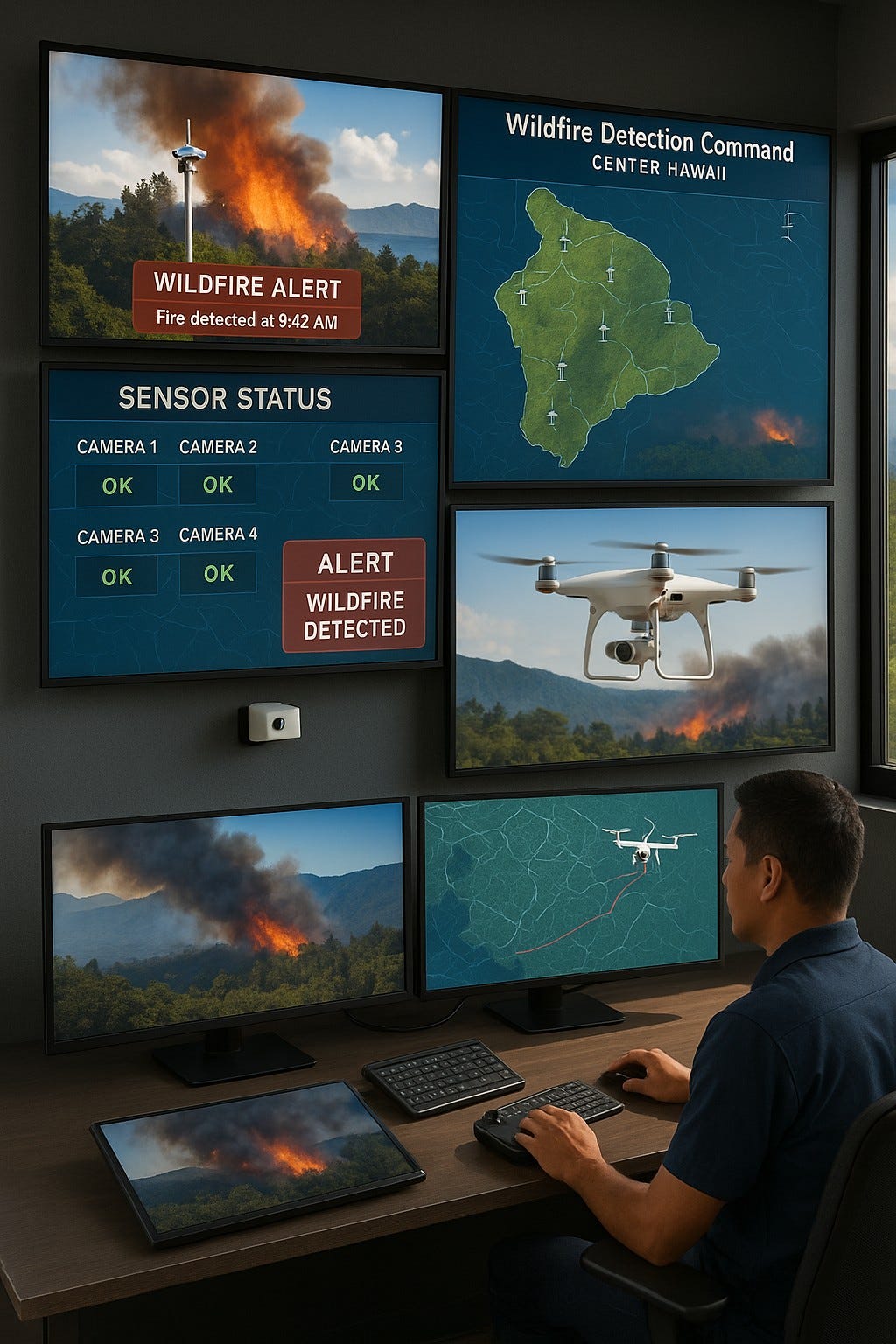When Sirens Are Silent: How AI and Data Can Prevent the Next Maui Wildfire Disaster
Part 2: Disaster Warning Systems Series
August 8, 2023. Lāhainā, Maui.
A historic town burned to the ground. Over 100 lives lost. Entire families trapped as flames closed in. And not a single outdoor siren sounded.
Maui had over 80 emergency sirens. Yet none were activated—in part due to fears they might be mistaken for tsunami alerts. Meanwhile, cell networks failed. Power lines collapsed. People were left in the dark.
This wasn’t a failure of technology. It was a failure of integration, planning, and redundancy.
What Went Wrong in Maui
Siren paralysis: Officials feared tsunami confusion, so they didn’t activate the sirens.
Cell and power outages: Alerts didn’t reach residents through mobile phones.
Single-channel failure: Without a backup plan, people died waiting for help that never came.
How AI and Data Can Fill the Gaps
We already have the tools to prevent this. But they must work together. Here’s how we can deploy ChatGPT, Power BI, Python, and drone tech to build fail-safe disaster systems.
1. AI-Generated, Multi-Channel Alerts
Using ChatGPT, you can generate clear, human-centered alerts triggered by sensors in real time:
pythonCopyEditfrom datetime import datetimeimport openaidef generate_alert(sensor_trigger_time, hazard_type, location):prompt = f"Generate an urgent alert for a {hazard_type} at {location}, issued at {sensor_trigger_time}. Format it for sirens, mobile, and drones."response = openai.ChatCompletion.create(model="gpt-4.5",messages=[{"role": "system", "content": "Act as an emergency alert co-pilot."},{"role": "user", "content": prompt}])return response.choices[0].message.contentValue: Ensures consistent, rapid messages across multiple platforms.
Real-world application: Alerts sent via text, email, drone speakers, and broadcast systems.
2. Real-Time Situational Awareness with Power BI
Power BI can overlay sensor data, fire perimeter maps, siren status, and mobile coverage gaps.
Dashboard Elements:
Fire detection time series
Siren activation zones
Cell tower functionality map
Live sensor-to-alert delay tracker
This empowers emergency teams with one view to act decisively—no toggling between systems.
3. Python-Based Redundancy Triggers
Create a Python logic layer that activates backups if primary systems fail:
pythonCopyEditif fire_detected and not sirens_active and not cell_service:dispatch_drones(location_coordinates)activate_drone_sirens()Value: Ensures alerts go out even when the grid is down.
Next step: Integrate this logic with GIS and real-time maps in Power BI.
What Makes This Different
Not just tech for tech’s sake: This is about saving lives.
Not another alert app: This is a multi-layered ecosystem—sensor-driven, AI-powered, and dashboard-verified.
Designed for the real world: Fires don’t wait. Alerts shouldn’t either.
Why It Matters
If we had this system in place, more families in Maui might have survived. And in the next wildfire, flood, or tornado, we must be ready.
This is your invitation—whether you're a data scientist, civic leader, or someone interested in making a difference:
Build a test dashboard
Share this post with your community
Volunteer for an emergency drill or tech pilot
Let’s make sure that when the next disaster strikes, the sirens won’t be silent.
Download the Full Setup Guide (PDF)
Build your own AI-powered emergency alert workflow using ChatGPT, Power BI, and Python.
Download Maui Alert System Setup Guide (PDF) here:
Emergency Response Dashboard Mockup
Visualize how emergency events progress—from sensor detection to AI alerts and drone response:
Stay tuned for Part 3: Joplin Tornado – Modeling Trust and Warning Fatigue in Power BI.






